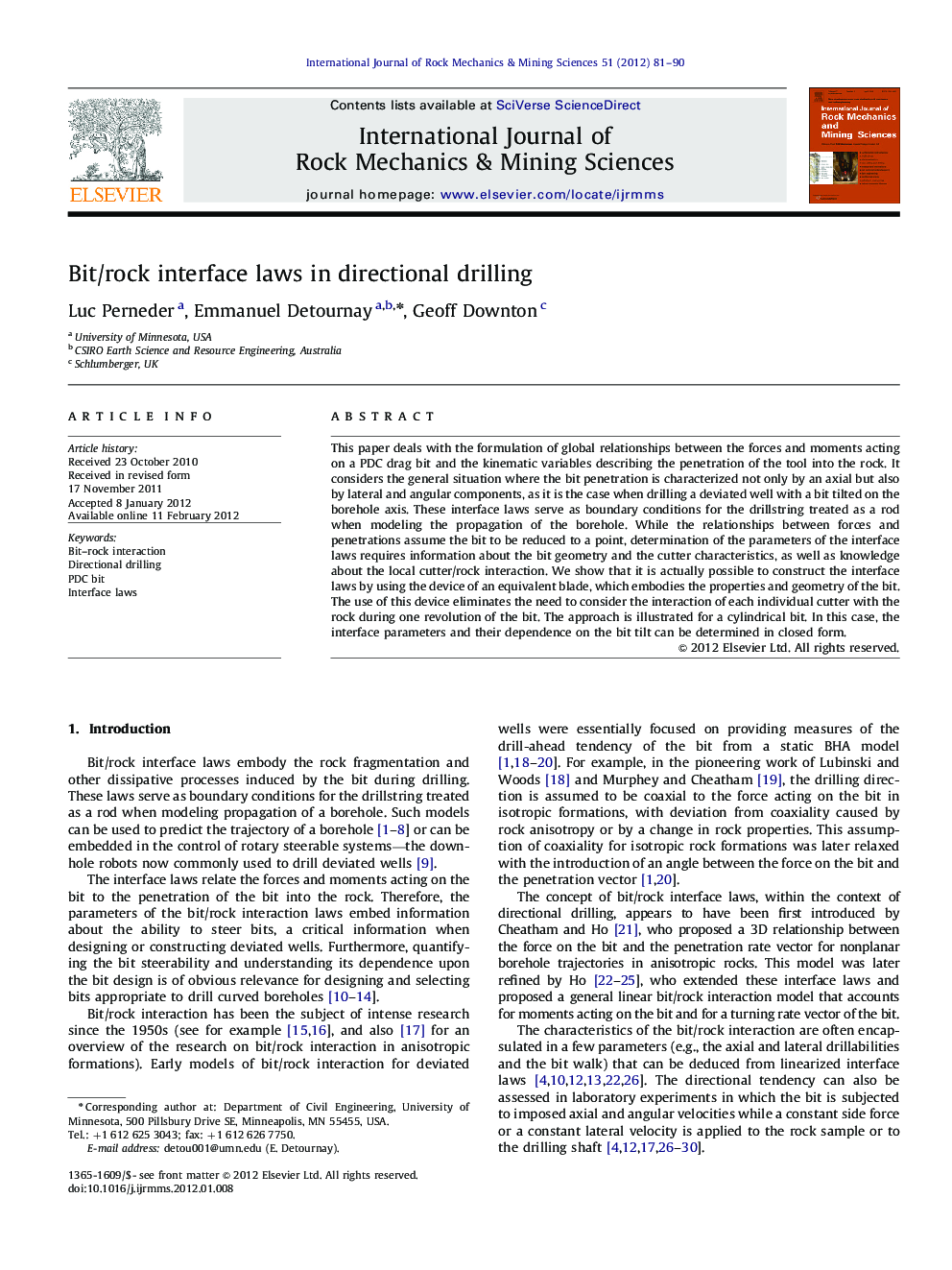| Article ID | Journal | Published Year | Pages | File Type |
|---|---|---|---|---|
| 809557 | International Journal of Rock Mechanics and Mining Sciences | 2012 | 10 Pages |
This paper deals with the formulation of global relationships between the forces and moments acting on a PDC drag bit and the kinematic variables describing the penetration of the tool into the rock. It considers the general situation where the bit penetration is characterized not only by an axial but also by lateral and angular components, as it is the case when drilling a deviated well with a bit tilted on the borehole axis. These interface laws serve as boundary conditions for the drillstring treated as a rod when modeling the propagation of the borehole. While the relationships between forces and penetrations assume the bit to be reduced to a point, determination of the parameters of the interface laws requires information about the bit geometry and the cutter characteristics, as well as knowledge about the local cutter/rock interaction. We show that it is actually possible to construct the interface laws by using the device of an equivalent blade, which embodies the properties and geometry of the bit. The use of this device eliminates the need to consider the interaction of each individual cutter with the rock during one revolution of the bit. The approach is illustrated for a cylindrical bit. In this case, the interface parameters and their dependence on the bit tilt can be determined in closed form.
► Establish the penetrations per revolution as state variables for the interface laws. ► Introduce the angular penetration and moment in the bit/rock interface laws. ► Establish the symmetry in the bit/rock interface laws. ► Develop an analytical approach to construct bit/rock interface laws. ► Determine the interface laws for a cylindrical bit drilling a curved trajectory.
